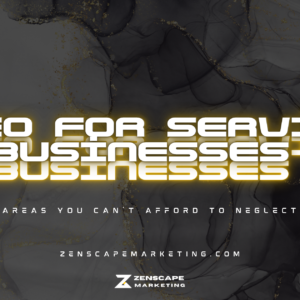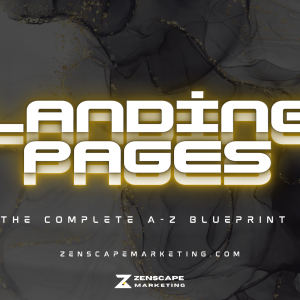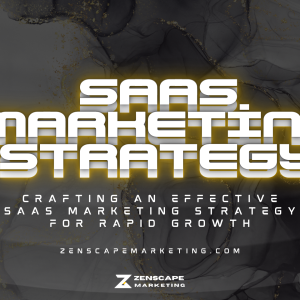For software-as-a-service (SaaS) companies, implementing an effective SaaS content marketing strategy is critical for driving sustainable growth. In today’s digital world, producing compelling content tailored to each stage of the buyer’s journey has become the holy grail of marketing for SaaS businesses looking to attract and convert new customers consistently.
However, many SaaS companies struggle with creating stand-out content that resonates with their target audience and drives results. They take a spray-and-pray approach, producing more and more content without a clear strategy. But more content for the sake of more content is not the answer. Truly effective SaaS content marketing requires a targeted, optimized approach across the entire customer lifecycle.
This article will explore the key steps in developing remarkable SaaS content marketing that persuades prospects and fuels growth for software companies. From deeply understanding your audience to promoting and amplifying content across channels, we will cover the critical components of a high-converting content strategy explicitly tailored for SaaS organizations.
Understand Your Audience Personas In Depth
The foundation of effective SaaS content marketing is intimately understanding your target audience and ideal customers. You must create well-defined buyer personas based on extensive research, including demographics, common challenges, motivations, objections, and goals.
Conduct interviews and surveys across your organization, including sales, customer success, and marketing teams, to gather insights into your audience segments. Develop detailed personas for each target customer profile.
The more granular details you can uncover about your key personas, the better you can ensure your content truly resonates rather than taking a generic approach.
SaaS companies often target multiple personas across various roles, seniority levels, company sizes, and industries. Create enough segmented personas to cover all your core customer profiles. This allows tailoring content to align with each persona’s priorities.
Keep these buyer personas at the front and center as you brainstorm content topics and angles. Every piece of content should speak directly to your personas’ needs, challenges, and interests. The content should aim to solve their problems and answer their questions.
Truly effective SaaS content marketing starts with a deep understanding of your audience. Do the research legwork upfront to intimately understand each persona. This will pay dividends as you develop content that resonates.
Map Out the Buyer’s Journey
Once you understand your target buyer personas, the next step is mapping out the entire customer journey from initial awareness to becoming a happy customer.
Analyze a prospect’s typical progression when evaluating and purchasing your SaaS solution. Break the journey into distinct stages, from early awareness and consideration to decision-making, onboarding, and renewal.
Identify the various steps and activities prospects take at each stage when learning about, comparing, selecting, and implementing a new SaaS platform. For example:
- Awareness:
Searching for solutions online, signing up for demos, downloading educational content.
- Consideration:
Comparing solutions, reading reviews, and calculating ROI.
- Decision:
Free trials, stakeholder reviews, negotiating contracts.
- Onboarding:
Training, integration, and data migration.
- Renewal:
Ongoing support, new feature education, expansion.
Look for any gaps in the journey where prospects may be under-served by content. These present opportunities to develop assets that educate and assist buyers at each phase.
It’s crucial that your content map directly to the prospect’s journey. For example, when candidates conduct research, educational guides and product blogs work well in early awareness building. However, case studies and ROI calculators are more relevant in the decision phase when comparing options.
Before creating content, take the time to chart the detailed progression to understand the SaaS buyer’s journey. This alignment is key for developing the right content that converts at each stage.
Establish Your Goal and KPIs
Once you have a solid understanding of your personas and their buyer’s journey mapped out, the next step is establishing clear goals and key performance indicators (KPIs) for your content marketing program.
Be very specific in defining exactly what you want the content to achieve.
Common SaaS content marketing goals include:
– Generating more qualified leads
– Reducing customer acquisition costs
– Shortening sales cycles
– Increasing customer lifetime value
– Improving customer retention.
However, avoid vague objectives like “raising awareness”. Make sure goals are measurable and tied to revenue impact.
Then, define quantifiable KPIs that will indicate progress towards those goals.
Relevant metrics to track include:
– Lead conversion rates
– Time to close deals
– Volume of sales-qualified leads
– Traffic growth
– Search rankings
– Social engagement
– And content downloads/consumption.
KPIs will vary based on your specific goals. For example, if the goal is to generate more leads, important KPIs would be website traffic, time on page, and lead conversion rate.
Establishing clear goals and quantifiable KPIs provides a focus for your SaaS content efforts. It also enables correctly measuring content performance and optimizing accordingly.
Develop an Integrated, Aligned Content Strategy
Once you understand your audience and their buying journey, it’s time to develop a comprehensive content strategy. This is your master plan for the topics you’ll create content on, formats you’ll produce, and distribution channels you’ll utilize.
Brainstorm a list of potential content topics and themes that map to each stage of the buyer’s journey. Identify gaps from your journey mapping where new content is needed to attract and assist prospects.
Prioritize this content topic list based on the opportunity to accelerate pipeline and revenue. Consider factors like search volume/demand, topic uniqueness, and the ability to create “pillar” content assets around the theme consistently.
Next, map out the formats you will produce for each topic and stage. A combination of long-form guides, blogs, visual assets, videos, and more is recommended for SaaS.
Structure the strategy into a healthy mix of educational “how to” content and promotional assets like product updates and customer stories. Use different formats and tones appropriate for each persona.
Outline your distribution plan detailing where and how often you will promote content across social media, email, paid ads, syndication, etc. Leverage repurposing to get more mileage from each asset.
Documenting your integrated content strategy will provide focus and consistency for execution. Follow the blueprint to develop content that attracts and converts throughout each SaaS buyer’s journey stage.
Optimize Content for Increased Organic Visibility
Once you have created your SaaS content, optimizing each piece for increased visibility and engagement is crucial. A key component is conducting keyword research and on-page optimization for organic search.
Research relevant keyword phrases using tools like Google Keyword Planner for each target topic and piece of content. Identify terms and questions your personas are searching for that align with your content focus and offerings.
Incorporate these keywords naturally throughout the content to boost relevancy. Specifically, include target phrases in:
- Page titles and H1/H2 headers
- Meta descriptions
- Image file names and alt text
- URL slugs
- Appropriately in the body content.
This “on-page SEO” helps search engines understand the topic focus and improves rankings for those terms.
Additionally, ensure content is structured for user experience and search crawler ability to parse. Use heading tags properly and break up long blocks of text. Optimize page speed.
Creating SEO-optimized, keyword-rich content improves discoverability through search and recommendation engines like YouTube. This increases reach and draws more qualified traffic from Google and other search engines.
Technical SEO optimization is just as important as the content itself. Make SEO a priority with every new content piece developed.
Promote and Amplify Your Content Across Channels
Creating remarkable content is only the first step – you need a strategy for promoting it. Have a plan to distribute all owned content across your website, blog, social channels, email nurturing programs, and any other media your audience visits.
Leverage email alerts, organic social posts, paid ads, and retargeting campaigns to promote every new piece of content. Segment lists for relevant content recommendations tailored to each subscriber’s interests.
Look for opportunities to repurpose content into new formats – turn blog posts into short videos, compile them into guides, podcast interviews, etc. Repurposing allows for additional distribution touchpoints.
Amplify reach by identifying relevant online publications, communities, and influencers to syndicate content. Secure guest posting opportunities and partnerships with outlets your audience follows.
Work press mentions and links to assets into outreach pitches. Content amplification expands your organic discovery and referral traffic.
Promoting your content in multiple ways is key to getting it consumed. Have a distribution plan for each piece rather than “publishing and praying.” Amplify reach through repurposing and partnerships for maximum impact.
Continuously Analyze Performance and Optimize
The work doesn’t stop once your content is created and promoted. To truly excel at SaaS content marketing, you must constantly analyze performance and refine your approach.
Track metrics like website traffic, leads, conversions, and sales that indicate how your content is performing. Break down data by topic, format, and distribution channel to identify what’s working well.
Conduct periodic customer surveys and interviews about their content preferences, pain points, and desired topics. Direct qualitative feedback is invaluable.
Review ratings/comments on content, social shares, and backlink profiles to assess engagement levels. Monitor rankings for target keywords to gauge SEO success.
Use all of these insights to identify your best-performing content. Diagnose underperforming areas. Continuously refine and expand on popular content that resonates while phasing out ineffective pieces.
Set aside quarterly time to review metrics and customer feedback, then realign your content strategy. Double down on what converts and fill identified gaps with new content.
SaaS content marketing is never “set it and forget it.” You must continually track performance, seek feedback, and iterate to stay effective. Use data to create even more compelling content over time.
Conclusion:
Effective SaaS content marketing tailored to each buyer journey stage is essential for growth. Follow this framework to develop remarkable content that attracts and converts the right customers for your business.
Want SaaS Content that Converts Like Magic? Let the Masters at Zenscape Make It Happen.
Creating compelling, optimized content tailored to your SaaS buyers’ journey is crucial for growth. However, executing an effective content strategy takes time and expertise. That’s where the content marketing specialists at Zenscape Marketing can help. Our team has in-depth experience developing and promoting results-driven content for SaaS and technology companies.
We start by deeply understanding your business, products, and audience. Then, we create a tailored content strategy to attract, engage, and convert SaaS buyers at every stage. From ideation to promotion, we handle the heavy lifting – allowing you to focus on running your business.
If you’re ready to accelerate growth through content marketing, schedule a free consultation today with Zenscape Marketing. Let’s discuss how impactful SaaS content can fuel your growth.






